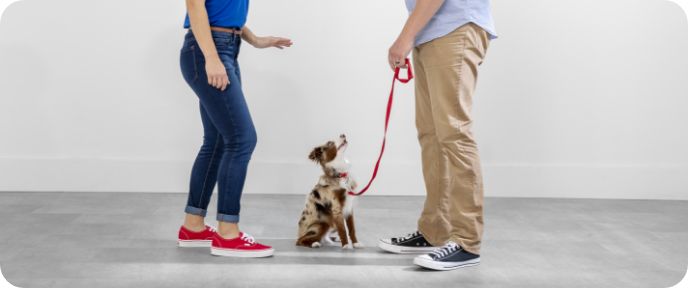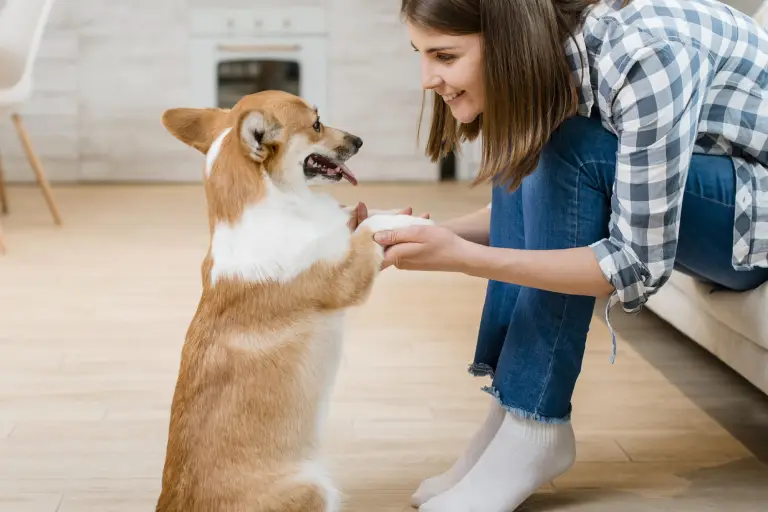Puppy Training Techniques: Teaching Basic Commands for a Happy Pet
Puppy Training Techniques: Teaching Basic Commands for a Happy Pet
Blog Article
Top Young Puppy Educating Strategies to Ensure a Well-Behaved Family Pet
Effective pup training is crucial for growing a mannerly buddy, and various techniques can significantly affect a canine's development. As we discover these techniques further, it ends up being clear that the success of puppy training pivots on a combination of techniques that can transform your pet dog's habits in amazing means.
Favorable Reinforcement Strategies
Utilizing positive support techniques is necessary for effective young puppy training, as it encourages preferred actions through benefits instead of punishment. This approach utilizes on the all-natural discovering procedures of dogs, strengthening excellent behavior by supplying substantial and instant incentives, such as deals with, praise, or play. By connecting positive results with particular activities, puppies are more most likely to duplicate those habits in the future.
Reliable favorable reinforcement entails timing and consistency. Benefits need to be offered promptly after the desired habits occurs to produce a clear connection in the pup's mind. Additionally, varying the kinds of benefits can maintain a pup's rate of interest and inspiration throughout the training process. Some puppies may react better to spoken praise while others may choose a favored toy or reward.

Consistency in Educating Commands
Keeping uniformity in training commands is vital for reinforcing the lessons found out with favorable reinforcement techniques. Dogs grow on routine and predictability, so using the same spoken commands and hand signals for particular actions is essential. This harmony helps young puppies understand what is expected of them, minimizing confusion and aggravation for both the fitness instructor and the pet dog.

Timing also plays a substantial duty in consistency. Commands should be provided without delay during training sessions and complied with immediately by positive support, such as deals with or appreciation. This instant reaction helps solidify the organization in between the command and the desired habits.
Integrating uniformity right into training sessions will produce a stable learning setting, promoting quicker proficiency of commands. Eventually, a well-structured approach cultivates a strong bond in between the puppy and its proprietor, leading to an extra obedient and well-behaved pet.
Socializing With Other Family Pets
Socialization with various other pets is vital for a puppy's development, as it aids them learn ideal habits and interaction skills in varied social contexts. Very early interactions with various pets can significantly influence a young puppy's temperament and flexibility in different situations. When pups are exposed to a variety of pet dogs, they end up being a lot more positive and less scared, which can prevent prospective behavior problems later in life.

In addition, observing body movement during interactions is essential. Educate your pup to identify signals from other family pets, such as indications of playfulness or discomfort, cultivating shared respect and understanding. Normal socializing not only boosts your young puppy's social skills yet likewise adds to their overall health, producing a more unified Discover More Here living atmosphere. Finally, prioritizing communications with other pets will certainly produce a socially experienced and well-shaped pet.
Cage Training Conveniences
Acknowledging the numerous benefits of pet crate training can substantially enhance both the pup's and owner's experience. Crate training supplies a secure and secure environment for pups, ensuring they really feel protected when laid off. This complacency can substantially reduce anxiousness and anxiety levels for both the pet and the proprietor.
In addition, cages offer as a useful housebreaking tool. Pups naturally avoid staining their resting area, consequently urging them to hold their bladder till they are let outside. This reaction can speed up the house-training process, promoting good behaviors early.
Crate training additionally aids in handling a young puppy's behavior when not being watched. By giving a designated area, proprietors can stop damaging habits, such as eating on furniture or entering into hazardous compounds. Crates can be beneficial throughout travel, supplying an acquainted space that can help calm a young puppy in brand-new environments.
Lastly, establishing a crate routine motivates independence, allowing pups to discover how to be alone without fear. Overall, pet crate training is an efficient technique for promoting discipline, security, and harmony, leading to my review here a well-adjusted, mannerly family pet.
Leash Training Fundamentals
Leash training is an essential facet of accountable pet dog ownership that makes certain a risk-free and pleasurable walking experience for both the pup and its proprietor. Correct leash training starts early, ideally during the puppy's socialization duration. When out in public., this training helps develop excellent behaviors and promotes positive behaviors.
To begin, pick a comfy collar or harness that fits your young puppy well. Connect a sturdy chain, ensuring it is not also long, as this can cause pulling and irregular actions. Beginning in a silent environment to reduce distractions and slowly introduce your young puppy to new surroundings.
Use positive reinforcement techniques, such as deals with and praise, to motivate your pup to walk beside you. If your pup pulls, quit strolling and wait for them to return to your side prior to continuing.
Furthermore, integrate brief training sessions with fun disturbances to construct your young puppy's focus. With commitment and determination, leash training will certainly cause an accommodating buddy, making walks pleasurable for both the puppy and the owner.
Final Thought
In verdict, utilizing effective puppy training methods is important for developing a well-behaved family pet. In general, these approaches collectively advertise a harmonious partnership in between young puppies and their owners.
As we discover these techniques better, click for more info it ends up being clear that the success of pup training pivots on a combination of methods that can change your animal's actions in impressive ways.
Using favorable support techniques is essential for efficient pup training, as it motivates wanted behaviors via rewards instead than penalty.Crate training also aids in handling a pup's behavior when not being watched.Leash training is a fundamental facet of liable animal ownership that makes sure a satisfying and risk-free strolling experience for both the pup and its owner.In conclusion, employing efficient young puppy training methods is critical for creating a mannerly pet dog.
Report this page